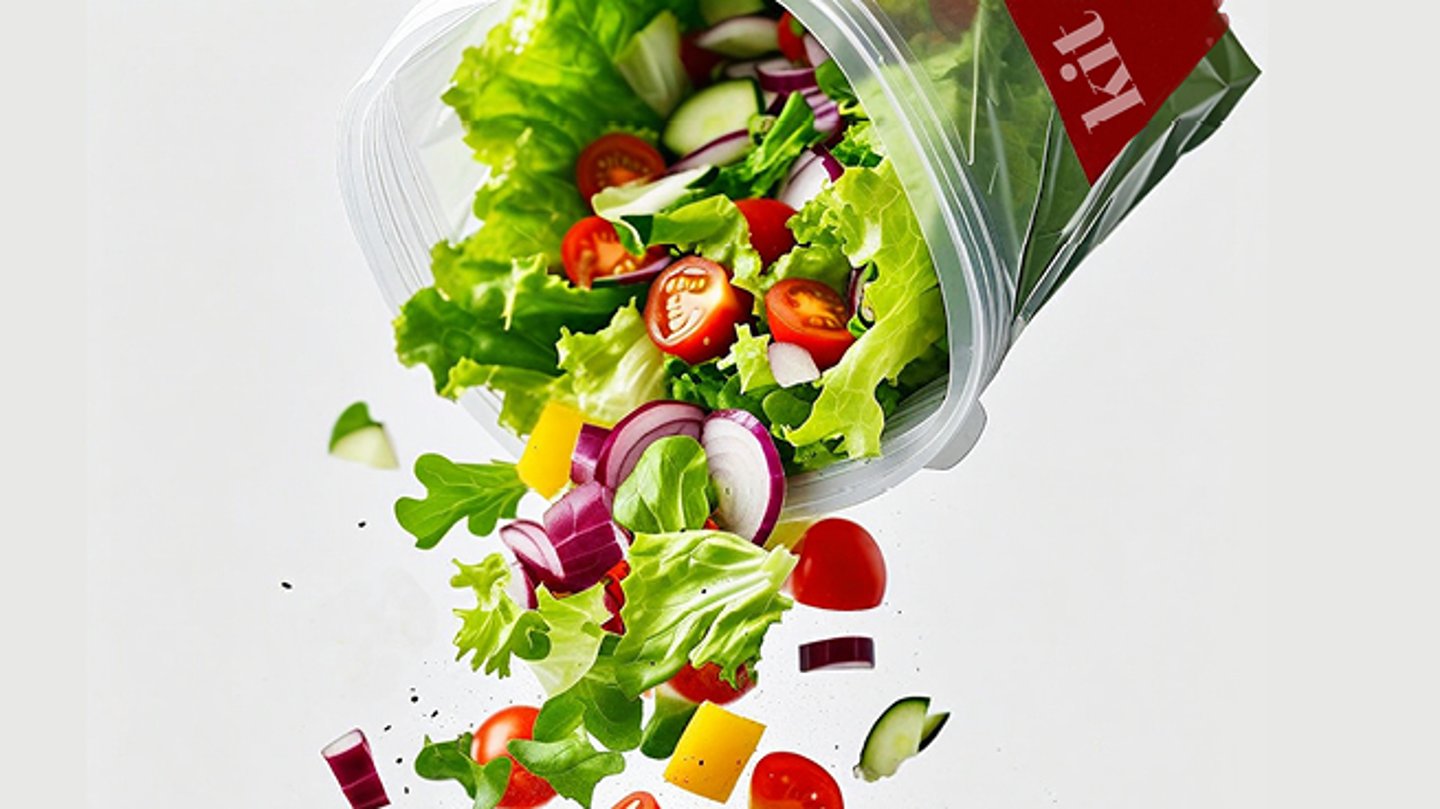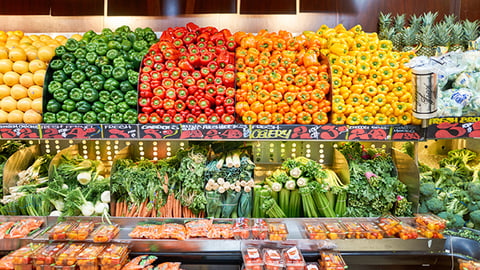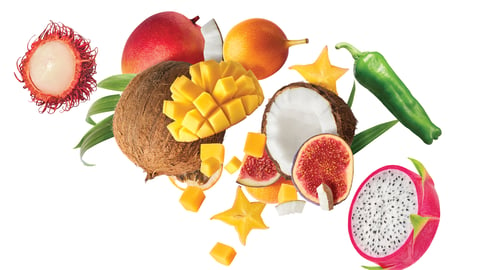Salad kits are becoming a powerhouse in the produce department
People want to eat more vegetables, but that often involves time-consuming washing, chopping, dicing and slicing. Enter salad kits: a healthy and convenient meal solution that’s becoming a powerhouse in the produce department.
Grand View Research forecasts Canada’s packaged salad market will reach US$1.26 billion by 2030, growing at a rate of 7.6% annually. Numerator data provided by The Ontario Produce Marketing Association shows Ontario households increased their salad kit purchases by 10.3% in the third quarter of 2024 compared to the same period in 2023.
Among Canadians who buy value-added produce, 50% do so to save meal-prep time, while 40% are looking for a quick snack, notes Greg Palmer, vice-president of trade and market development at the Canadian Produce Marketing Association (CPMA), citing data from Execulytics Consulting. “People are returning to the office and looking for a quick lunch, and salad kits are a healthy, filling option,” he says. He adds that ease of preparation, cost effectiveness and the growing variety of exciting new options are also driving the category’s growth.
Here’s a look at the trends and tastes shaping the salad-kit market.
Global gardens
“Global influences have significantly shaped our salad kit offerings,” says Ezio Bondi, co-founder of arte* salad kits. “We’ve seen restaurant and foodservice trends trickle down into the retail space, prompting us to introduce globally inspired flavours that set our products apart.” This year, for example, arte* launched its Sweet Sesame Heat Kit, featuring a Korean-inspired gochujang dressing, paired with candied ginger and crispy wontons.
In its dressings and toppings for limited-edition global flavour-inspired salad kits, Taylor Farms has embraced new combinations of spices and herbs such as turmeric to create bold colours, along with such flavours as mango and curry, says Charis Neves, director, innovation & product at Taylor Farms.
Diverse diets
Joey Bernaudo, vice-president of merchandising at Longo’s, says customers are not only looking for healthier options, but also solutions that meet specific dietary needs. “Salad kit inclusions need to accommodate a wide variety of tastes and requirements including vegan or higher protein options, as well as satisfy diverse flavour profiles,” he says, adding that protein-based salad kits have been receiving a lot of interest.
Arte* is constantly seeking ways to create salad kits that cater to people with specific dietary restrictions. “Our best-selling kit—the Zesty Kale Caesar—is both vegan and gluten free, with nutritional yeast used in place of parmesan,” says co-founder Matt Duperrouzel. “It delivers all the umami of parmesan without the fat. We also incorporated roasted chickpeas instead of traditional croutons, adding crunch and extra protein.”
Superior nutrients
Salad kits can pack an even healthier punch with superfoods. “Taylor Farms’ salad blends contain superfoods such as nutrient-dense kale, broccoli, Brussels sprouts and romaine that are great sources of vitamins A, C, K and fibre,” says Neves. “We also like to use crispy lentils, almonds, pepitas and dried fruits such as cranberries to boost the health attributes of some of our salad kits.”
Sustainable salads
Salad-kit makers are finding ways to make their greens greener. CPMA’s Palmer notes that many salad-kit ingredients are byproducts from other cutting activities, for example, using broccoli slaw from cut broccoli. This helps prevent waste from ending up in landfills.
On the packaging front, arte* is in the early stages of exploring more sustainable options, such as printed film with washable ink or fully biodegradable packaging. “It’s a tricky balance between convenience and cost, which we are acutely aware of,” says Bondi. “[Consumers] are considering ingredients and recyclability and factoring these into their purchasing decisions; therefore, it’s important for us to make a strong impression on both the front and back of the package.”
This article was first published in Canadian Grocer’s February 2025 issue.



